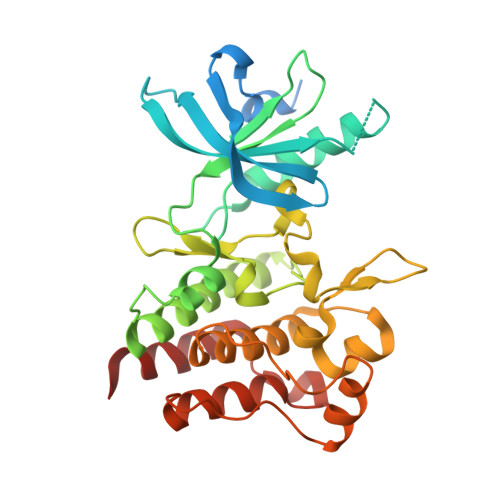Multisubstituted quinoxalines and pyrido[2,3-d]pyrimidines: Synthesis and SAR study as tyrosine kinase c-Met inhibitors.
Wu, K., Ai, J., Liu, Q., Chen, T., Zhao, A., Peng, X., Wang, Y., Ji, Y., Yao, Q., Xu, Y., Geng, M., Zhang, A.(2012) Bioorg Med Chem Lett 22: 6368-6372
- PubMed: 22985853
- DOI: https://doi.org/10.1016/j.bmcl.2012.08.075
- Primary Citation of Related Structures:
4GG5, 4GG7 - PubMed Abstract:
Two series of new analogues were designed by replacing the quinoline scaffold of our earlier lead 2 (zgw-atinib) with quinoxaline and pyrido[2,3-d]pyrimidine frameworks. Moderate c-Met inhibitory activity was observed in the quinoxaline series. Among the pyrido[2,3-d]pyrimidine series, compounds 13a-c possessing an O-linkage were inactive, whilst the N-linked analogues 15a-c retained c-Met inhibitory potency. Highest activity was observed in the 3-nitrobenzyl analog 15b that showed an IC(50) value of 6.5 nM. Further structural modifications based on this compound were undergoing.
Organizational Affiliation:
Department of Medicinal Chemistry, China Pharmaceutical University, Nanjing 210009, China.















